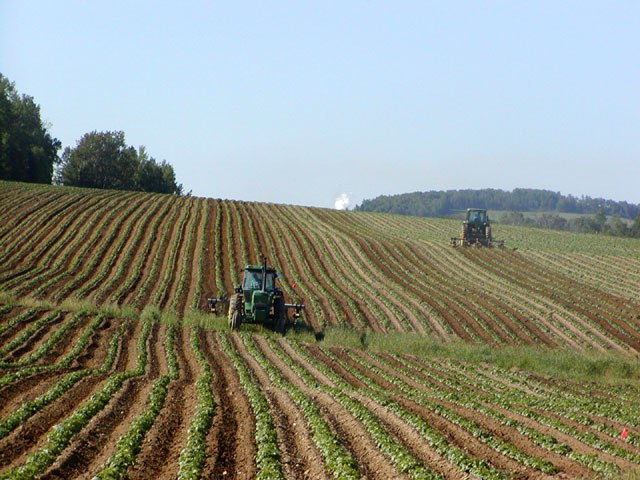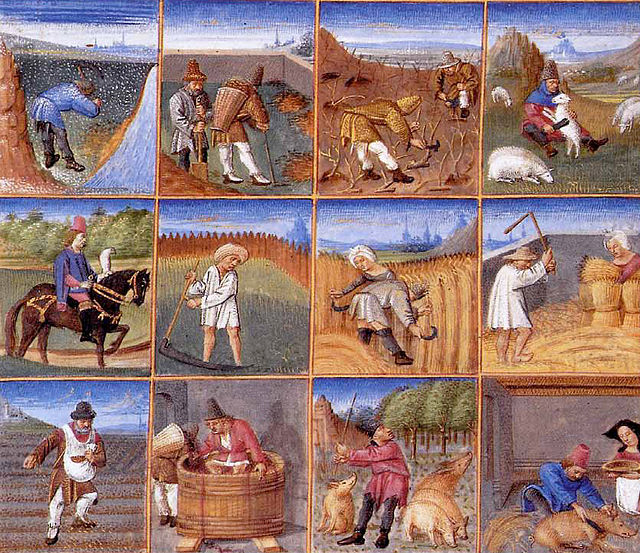In agriculture, monoculture is the practice of growing one crop species in a field at a time. Monoculture is widely used in intensive farming and in organic farming: both a 1,000-hectare cornfield and a 10-ha field of organic kale are monocultures. Monoculture of crops has allowed farmers to increase efficiency in planting, managing, and harvesting, mainly by facilitating the use of machinery in these operations, but monocultures can also increase the risk of diseases or pest outbreaks. This practice is particularly common in industrialized nations worldwide. Diversity can be added both in time, as with a crop rotation or sequence, or in space, with a polyculture or intercropping.
Monocultural potato field
Aerial view of deforested area prepared for monoculture or cattle ranching, near Porto Velho in Rondônia, Brazil, in 2020
Agriculture encompasses crop and livestock production, aquaculture, fisheries, and forestry for food and non-food products. Agriculture was the key development in the rise of sedentary human civilization, whereby farming of domesticated species created food surpluses that enabled people to live in cities. While humans started gathering grains at least 105,000 years ago, nascent farmers only began planting them around 11,500 years ago. Sheep, goats, pigs, and cattle were domesticated around 10,000 years ago. Plants were independently cultivated in at least 11 regions of the world. In the 20th century, industrial agriculture based on large-scale monocultures came to dominate agricultural output.
Winnowing grain in Ethiopia.
Centres of origin, as numbered by Nikolai Vavilov in the 1930s. Area 3 is no longer recognised as a centre of origin New Guinea (area P) was identified more recently.
Agricultural scenes of threshing, a grain store, harvesting with sickles, digging, tree-cutting and ploughing from ancient Egypt. Tomb of Nakht, 15th century BC
Agricultural calendar, c. 1470, from a manuscript of Pietro de Crescenzi






